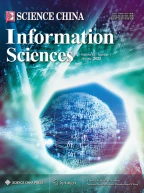Abstract
In wireless sensor networks (WSNs), the limited battery capacity restricts the lifetime of the sensor nodes and thus degrades the system performance. The energy harvesting and cooperation techniques are promising solutions to prolonging the battery life, by collecting energy from ambient environment and exchanging energy among sensor nodes. This paper studies the joint utility maximization problem for WSNs in consideration of energy harvesting and cooperation. We first derive an upper bound on the Lyapunov drift for the network stability, and then formulate the optimization as a stochastic optimization problem. Furthermore, we propose an energy harvesting and energy transfer, data transmission, power control, routing and scheduling (EDPR) online algorithm by combining Lyapunov optimization technique with drift-plus-penalty method and perturbation technique. It contributes to optimal utility in a distributed manner along with a balanced trade-off between network utility and queue backlog, with no need for any statistical information about dynamic systems and no concern of curse of dimensionality under large queue backlog. Simulation results also show the practicality of the proposed algorithm in real implementation since data transmission has a linear relationship with battery life.
Similar content being viewed by others
References
Almalkawi I T, Guerrero Zapata M, Al-Karaki J N, et al. Wireless multimedia sensor networks: current trends and future directions. Sensors, 2010, 10: 6662–6717
Zhang Y S, He Q, Xiang Y, et al. Low-cost and confidentiality-preserving data acquisition for internet of multimedia things. IEEE Int Thing J, 2018, 5: 3442–3451
Zhu B, Xie L H, Han D M, et al. A survey on recent progress in control of swarm systems. Sci China Inf Sci, 2017, 60: 070201
Zhang Y, Xiang Y, Zhang L Y, et al. Secure wireless communications based on compressive sensing: a survey. IEEE Commun Surv Tut, 2019, 21: 1093–1111
Yousaf R, Ahmad R, Ahmed W, et al. A unified approach of energy and data cooperation in energy harvesting WSNs. Sci China Inf Sci, 2018, 61: 082303
Alippi C, Galperti C. An adaptive system for optimal solar energy harvesting in wireless sensor network nodes. IEEE Trans Circ Syst I, 2008, 55: 1742–1750
Yang H H, Lee J, Quek T Q S. Heterogeneous cellular network with energy harvesting-based D2D communication. IEEE Trans Wirel Commun, 2016, 15: 1406–1419
Dhillon H, Li Y, Nuggehalli P, et al. Fundamentals of heterogeneous cellular networks with energy harvesting. IEEE Trans Wirel Commun, 2014, 13: 2782–2797
Vaze R. Transmission capacity of wireless ad hoc networks with energy harvesting nodes. In: Proceedings of Global Conference on Signal and Information Processing (GlobalSIP), Austin, 2013. 353–358
Michelusi N, Stamatiou K, Zorzi M. Transmission policies for energy harvesting sensors with time-correlated energy supply. IEEE Trans Commun, 2013, 61: 2988–3001
Prabuchandran K J, Meena S K, Bhatnagar S. Q-learning based energy management policies for a single sensor node with finite buffer. IEEE Wirel Commun Lett, 2013, 2: 82–85
Hsu R C, Liu C T, Wang H L. A reinforcement learning-based ToD provisioning dynamic power management for sustainable operation of energy harvesting wireless sensor node. IEEE Trans Emerg Top Comput, 2014, 2: 181–191
Yu H, Neely M J. Learning aided optimization for energy harvesting devices with outdated state information. In: Proceedings of IEEE Conference on Computer Communications, 2018. 1853–1861
Neely M J. Super-fast delay tradeoffs for utility optimal fair scheduling in wireless networks. IEEE J Sel Areas Commun, 2006, 24: 1489–1501
Huang L, Moeller S, Neely M J, et al. LIFO-backpressure achieves near-optimal utility-delay tradeoff. IEEE/ACM Trans Netw, 2013, 21: 831–844
Huang L. Optimal sleep-wake scheduling for energy harvesting smart mobile devices. IEEE Trans Mobile Comput, 2017, 16: 1394–1407
Neely M J. Stochastic network optimization with application to communication and queueing systems. Synth Lect Commun Netw, 2010, 3: 1–211
Eryilmaz A, Srikant R. Joint congestion control, routing, and MAC for stability and fairness in wireless networks. IEEE J Sel Areas Commun, 2006, 24: 1514–1524
Liu J, Shroff N B, Xia C H, et al. Joint congestion control and routing optimization: an efficient second-order distributed approach. IEEE/ACM Trans Netw, 2016, 24: 1404–1420
Le L B, Modiano E, Shroff N B. Optimal control of wireless networks with finite buffers. IEEE/ACM Trans Netw, 2012, 20: 1316–1329
Xu W Q, Zhang Y S, Shi Q J, et al. Dynamic optimization for heterogeneous powered wireless multimedia sensor networks with correlated sources and network coding. 2014. ArXiv:1410.5697
You C S, Huang K B, Chae H. Energy efficient mobile cloud computing powered by wireless energy transfer. IEEE J Sel Areas Commun, 2016, 34: 1757–1771
Bi S Z, Ho C K, Zhang R. Wireless powered communication: opportunities and challenges. IEEE Commun Mag, 2015, 53: 117–125
Huang L B, Neely M J. Utility optimal scheduling in energy-harvesting networks. IEEE/ACM Trans Netw, 2013, 21: 1117–1130
Gutiérrez M A, Steen K. Stochastic finite element methods. In: Encyclopedia of Computational Mechanics. Hoboken: Wiley, 2018
Tapparello C, Simeone O, Rossi M. Dynamic compression-transmission for energy-harvesting multihop networks with correlated sources. IEEE/ACM Trans Netw, 2014, 22: 1729–1741
Acknowledgements
This work was supported in part by National Science and Technology Major Project of China (Grant No. 2018ZX03001008-002), in part by Natural Science Foundation of Jiangsu Province (Grant No. BK20180011), and in part by National Natural Science Foundation of China (Grant Nos. 61571120, 61871122).
Author information
Authors and Affiliations
Corresponding author
Rights and permissions
About this article
Cite this article
Zhu, P., Xu, B., Li, J. et al. Joint utility optimization for wireless sensor networks with energy harvesting and cooperation. Sci. China Inf. Sci. 63, 122302 (2020). https://doi.org/10.1007/s11432-019-9936-y
Received:
Revised:
Accepted:
Published:
DOI: https://doi.org/10.1007/s11432-019-9936-y
